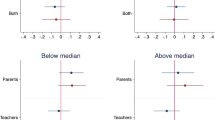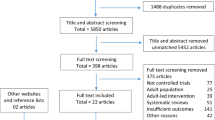Abstract
The HEALTHY study was a randomized, controlled, multicenter, middle school-based, multifaceted intervention designed to reduce risk factors for the development of type 2 diabetes. The study randomized 42 middle schools to intervention or control, and followed students from the sixth to the eighth grades. Participants were a racially, ethnically and geographically diverse cohort from across the United States. Here, we describe the conceptual underpinnings and design of the social marketing-based communications component of the HEALTHY study intervention that combined changes in the school nutrition and physical education (PE) environment with behavior change initiatives. The communications intervention component coordinated multiple elements to deliver campaigns that served to integrate and support all aspects of the HEALTHY intervention. The campaigns unfolded across five semesters of middle school, each targeting a specific theme related to the HEALTHY objectives. Communications campaigns comprised (1) core elements such as branding, posters, banners and visual and verbal messaging, (2) student events supporting the nutrition, PE and behavior intervention components through the application of social marketing and communications strategies, including the incorporation of student-generated media and (3) distribution of premiums and theme enhancers to extend the visibility of the study beyond the intervention environment. Formative research conducted with students, parents and school administrators was used to refine the communications strategy. Student peer communicators selected from the student body were involved to influence the normative student environment. Marketing and creative design experts developed a brand, logo, activities and materials. In the latter half of the study, student-generated messages and media were used to reflect local interests and culture and enhance peer influence. The HEALTHY intervention delivery and impact were strengthened by the communications strategies. The HEALTHY experience provides practical considerations for systematically incorporating a social marketing-based communications approach within future school-based health behavior interventions.
This is a preview of subscription content, access via your institution
Access options
Subscribe to this journal
Receive 12 print issues and online access
$259.00 per year
only $21.58 per issue
Buy this article
- Purchase on Springer Link
- Instant access to full article PDF
Prices may be subject to local taxes which are calculated during checkout
Similar content being viewed by others
References
The HEALTHY Study Group. HEALTHY study rationale, design and methods: moderating risk of type 2 diabetes in multi-ethnic middle school students. Int J Obes 2009; 33 (Suppl 4): S4–S20.
McMurray RG, Bassin S, Jago R, Bruecker S, Moe EL, Murray T et al., for the HEALTHY Study Group. Rationale, design and methods of the HEALTHY study physical education intervention component. Int J Obes 2009; 33 (Suppl 4): S37–S43.
Gillis B, Mobley C, Stadler DD, Hartstein J, Virus A, Volpe SL et al., for the HEALTHY Study Group. Rationale, design and methods of the HEALTHY study nutrition intervention component. Int J Obes 2009; 33 (Suppl 4): S29–S36.
Venditti EM, Elliot DL, Faith MS, Firrell LS, Giles CM, Goldberg L et al., for the HEALTHY Study Group. Rationale, design and methods of the HEALTHY study behavior intervention component. Int J Obes 2009; 33 (Suppl 4): S44–S51.
Summerbell CD, Waters E, Edmunds LD, Kelly S, Brown T, Campbell KJ . Interventions for preventing obesity in children. Cochrane Database Syst Rev 2005; 3: CD001871.
Grier S, Bryant CA . Social marketing in public health. Annu Rev Public Health 2005; 26: 319–339.
Andreasen A . Marketing Social Change: Changing Behavior to Promote Health, Social Development, and the Environment. Jossey-Bass Inc: San Francisco, 1995.
Smith DE, Marcus MD, Lewis CE, Fitzgibbon M, Schreiner P . Prevalence of binge eating disorder, obesity, and depression in a biracial cohort of young adults. Ann Behav Med 1998; 20: 227–232.
Aggleton P . Behavior change communication strategies. AIDS Educ Prev 1997; 9: 111–123.
Institute of Medicine. Food Marketing to Children and Youth: Threat or Opportunity? The National Academies Press: Washington, DC, 2006.
National Health Service. Choosing health: making healthy choices easier. National Health Service 2004. Available at http://www.dh.gov.uk/en/Publicationsandstatistics/Publications/PublicationsPolicyAndGuidance/DH_4094550 (accessed 3 August 2009).
Huhman M, Potter LD, Wong FL, Banspach SW, Duke JC, Heitzler CD . Effects of a mass media campaign to increase physical activity among children: year 1 results of the VERB campaign. Pediatrics 2005; 116: e277–e284.
Wong F, Huhman M, Heitzler C, Asbury L, Bretthauer-Mueller R, McCarthy S et al. VERB—a social marketing campaign to increase physical activity among youth. Prev Chronic Dis 2004; 1: A10.
Maibach EW, Rothschild M, Novelli W . Social Marketing in Health Behavior and Health Education. Mosby: St Louis, MO, 2002.
Bauman A . Precepts and principles of mass media campaign evaluation in Australia. Health Promotion J Aust 2000; 10: 89–92.
Noar SM . A 10-year retrospective of research in health mass media campaigns: where do we go from here? J Health Commun 2006; 11: 21–42.
Janis IL . Effects of fear arousal on attitude change: recent development in theory and experimental research. Adv Exp Soc Psychol 1967; 3: 166–224.
Rosen E . The Anatomy of Buzz. Doubleday: New York, NY, 2002.
Holdford DA . Using buzz marketing to promote ideas, services, and products. J Am Pharm Assoc 2004; 44: 387–395.
Schneider M, Hall WJ, Hernandez AE, Hindes K, Montez G, Pham T et al. for the HEALTHY Study Group. Rationale, design and methods for process evaluation in the HEALTHY study. Int J Obes 2009; 33 (Suppl 4): S60–S67.
Lefebvre RC . The new technology: the consumer as participant rather than target audience. Soc Mark Q 2007; 8: 31–42.
Stead M, Hastings G, McDermott L . The meaning, effectiveness and future of social marketing. Obes Rev 2007; 8: 189–193.
McKenna J, Gutierrez K, McCall K . Strategies for an effective youth counter-marketing program: recommendations from commercial marketing experts. J Public Health Manag Pract 2000; 6: 7–13.
Abroms LC, Maibach EW . The effectiveness of mass communication to change public behavior. Annu Rev Public Health 2008; 29: 234.
Rogers EM . Diffusion of Innovations, 5th edn. Free Press: New York NY, 2003.
Acknowledgements
Past and present HEALTHY study group members on the Communications Committee were Lynn DeBar (Chair), Tara Blackshear, Jamie Bowen, Sarah Clayton, Tamara Costello, Kimberly Drews, Eileen Ford, Angela Garcia, Katie Giles, Bonnie Gillis, Heather Murphy Grund, Art Hernandez, Ann Jessup, Megan Krause, Barbara Linder, Jeff McNamee, Esther Moe, Chris Nichols, Margaret Schneider, Brenda Showell, Sara Solomon, Diane Stadler, Mamie White and Alissa Wheeler. The Communications Committee was supported by the creative teams at the Academy for Educational Development and Planit Agency. We certify that all applicable institutional and governmental regulations concerning the ethical use of human volunteers were followed during this research.
An online Appendix shows an example poster using student generated media.
Author information
Authors and Affiliations
Consortia
Corresponding author
Additional information
Supplementary Information accompanies the paper on International Journal of Obesity website (http://www.nature.com/ijo)
Supplementary information
Rights and permissions
About this article
Cite this article
DeBar, L., Schneider, M., Ford, E. et al. Social marketing-based communications to integrate and support the HEALTHY study intervention. Int J Obes 33 (Suppl 4), S52–S59 (2009). https://doi.org/10.1038/ijo.2009.117
Published:
Issue Date:
DOI: https://doi.org/10.1038/ijo.2009.117
Keywords
This article is cited by
-
Effectiveness of a pre-adolescent inter-generational intervention to address HIV and obesity in South Africa, using a pretest-posttest design
BMC Public Health (2021)
-
Social Marketing as a Framework for Youth Physical Activity Initiatives: a 10-Year Retrospective on the Legacy of CDC’s VERB Campaign
Current Obesity Reports (2017)
-
Novel measures of inflammation and insulin resistance are related to obesity and fitness in a diverse sample of 11–14 year olds: The HEALTHY Study
International Journal of Obesity (2016)
-
Youth peers put the “invent” into NutriBee’s online intervention
Nutrition Journal (2015)
-
School factors as barriers to and facilitators of a preventive intervention for pediatric type 2 diabetes
Translational Behavioral Medicine (2014)



